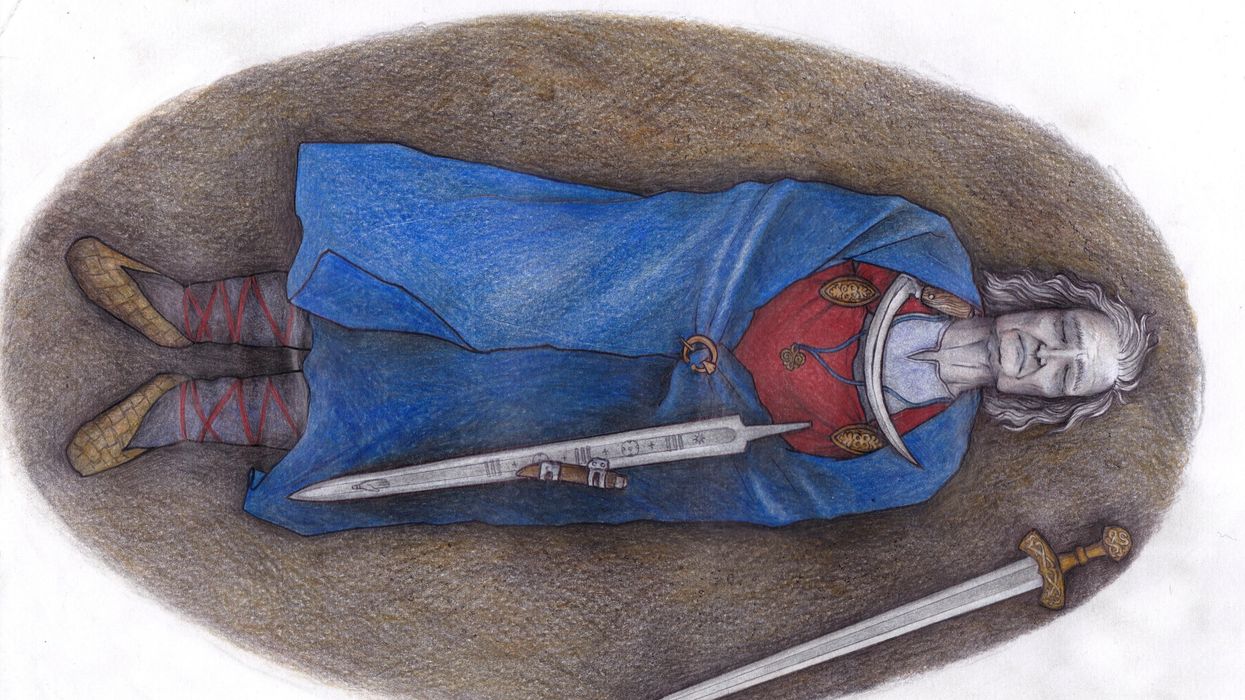
A reconstruction drawing of the Suontaka grave. (University of Turku/Veronika Paschenko)

Researchers have long held that a famous Nordic weapon grave evidenced the existence of powerful female warriors in medieval Finland, but now a new interpretation is being cast into the limelight.
Following an ancient-DNA analysis of the 1,000-year-old remains, a group of researchers now claim that the warrior was likely "a respected person whose gender identity may well have been nonbinary."
"The new findings challenge previous ideas about gender roles and expression and suggest that nonbinary people were valued and respected members of their communities," NPR claimed in response to the report, which comes as western society grapples with questions on the relation between gender identity and biological sex.
The findings also serve as a reminder that "biology does not directly dictate a person's self-identity," added the study's lead author, Ulla Moilanen, a doctoral candidate in archaeology at the University of Turku.
Archaeologists first discovered the grave in 1968 in Suontaka Vesitorninmäki in southern Finland. Inside they discovered human remains buried alongside a sword, woolen clothes, and pieces of jewelry such as brooches. The jewelry, researchers said, "indicates that the buried individual was dressed in typical female clothing of the period."
For decades, historians believed the Suontaka grave was either a double burial of a man and a woman, or a burial of just a woman, proving the existence of a respected female warrior class in medieval Finland. But neither of those conclusions are satisfactory, researchers at the University of Turku claim.
Their conclusion was drawn after a DNA analysis suggested that the individual's chromosomal makeup may have been XXY, meaning the buried individual likely had Klinefelter syndrome and was anatomically a male.
According to the Mayo Clinic, Klinefelter syndrome "is a genetic condition that results when a boy is born with an extra copy of the X chromosome." The symptoms can be very mild and the condition often isn't diagnosed until adulthood. But in certain cases, it can result in larger breasts, smaller penis and testicles, and infertility.
Moilanen noted the DNA analysis may not be trustworthy since the DNA was badly damaged and the results were "based on a very small set of data."
Yet nonetheless, according to a news release, she concluded that "the individual buried in Suontaka may be an example of an individual whose social identity settles outside the traditional division of genders."
More detail about the peer-reviewed study can be found in the European Journal of Archaeology, where it was published last month.